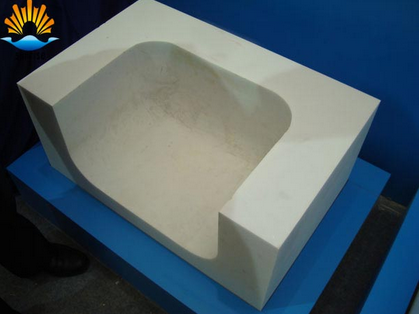Product
Fused Cast AZS Block
AZS Casting Type
AZS Ramming Materials
Fused Cast AZS TY-AZS41
Fused Cast AZS TY-AZS36
Fused Cast AZS TY-AZS33
Fused Cast Alumina Block
Fused cast Alumina Block TY-H
Fused cast Alumina Block TY-A
Fused cast Alumina Block TY-M
Fused Cast High Zirconia Block
Fused Cast Skid Rail Block
Silica brick
Magnesia Series Brick
Bonded Refractory Block
High alumina And Fire clay bricks
Insulation Series Brick
Ceramic Fiber Products
Contact Details
- 0086 371 63838939
- 0086 371 63835539
- sales@sunriserefr.com
- tkfanyi
- No.36 Fengchan Road, Zhengzhou City
Solutions
The Molding and Methods of Refractory Brick
- More related products
- Fused Cast AZS Block
- Fused Cast Alumina Block
- Fused Cast High Zirconia Block
- Fused Cast Skid Rail Block
outside force and the model, making the blank will be processed into specified dimension and
shape. However, the flow castable's construction of the latest development does not need basically external
forces.
The molding of refractory brick, firstly is to satisfy the using demand of the products, when refractory brick
masonry, the requirement of products must have a certain shape, precise size, and enough strength. Secondly,
molding is also the efficient way to improve the physical and chemical properties of products, by shape can
improve the organizational structure of products. Refractory brick has a lot of molding methods, the traditional
processing methods according to how much moisture content can be divided into:

1. Semi-dry method: its blank moisture is around 5%, suitable for blank of different clinker content(50% 100%).
2. Plastic method: its blank moisture is around 15%, suitable for manufacturing large or complicated shape of
the products.
3. Grouting method: its blank moisture is around 40%, is suitable for all kinds of hollow thin-walled refractory
materials in production.
The modeling methods of refractory brick have a lot, the common used molding ways contain organic pressure
molding, vibration molding, extrusion molding, ramming forming, isostatic pressure molding, casting molding,
grouting, etc.
Choose what kind of molding method, mainly according to the nature of the plaster, body shape, size and other
technical requirements. In addition to most of the refractory brick is made of machine pressure forming,
vibratory molding is used for special-shaped body, the extrusion molding is generally used in tubular blank, slip
casting molding is used for thin wall body shape.
Read more
Need more information? Drop us a line
For more information on any of our products please get in touch using the form below. One of our sales team will respond to your enquiry as soon as possible.
Copyright © 2014 Zhengzhou Sunrise Refractory Co., Ltd. Site Index Product IndexSitemap









